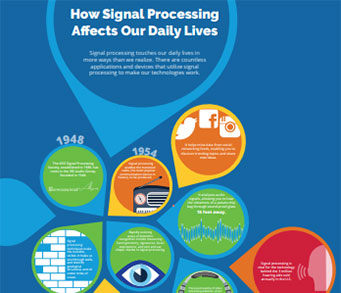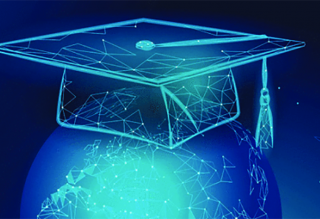SPS Feed
Top Reasons to Join SPS Today!
1. IEEE Signal Processing Magazine
2. Signal Processing Digital Library*
3. Inside Signal Processing Newsletter
4. SPS Resource Center
5. Career advancement & recognition
6. Discounts on conferences and publications
7. Professional networking
8. Communities for students, young professionals, and women
9. Volunteer opportunities
10. Coming soon! PDH/CEU credits
Click here to learn more.
The Latest News, Articles, and Events in Signal Processing
Audio pattern recognition is an important research topic in the machine learning area, and includes several tasks such as audio tagging, acoustic scene classification, music classification, speech emotion classification and sound event detection. In this blog, we introduce pretrained audio neural networks (PANNs) trained on the large-scale AudioSet dataset. These PANNs are transferred to other audio related tasks. We investigate the performance and computational complexity of PANNs modeled by a variety of convolutional neural networks. We propose an architecture called Wavegram-Logmel-CNN using both log-mel spectrogram and waveform as input feature.
Recent years, face recognition has made a remarkable breakthrough due to the emergence of deep learning. However, compared with frontal face recognition, many deep face recognition models still suffer serious performance degradation when handling profile faces. To address this issue, we propose a novel Frontal-Centers Guided Loss (FCGFace) to obtain highly discriminative features for face recognition. Most existing discriminative feature learning approaches project features from the same class into a separated latent subspace.
Date: 13 December 2022
Time: 10:00 AM ET (New York Time)
Title: Deep Learning for All-in-Focus Imaging
Registration | Full webinar details
Date: 6 December 2022
Time: 3:00 PM (Central European Time (CET))
Title: Artificial Intelligence for Applications in Neurology
Registration | Full webinar details
Date: 14 December 2022
Time: 3:00 PM (Paris Time)
Title: Subgraph-Based Networks for Expressive, Efficient, and Domain-Independent Graph Learning
Date: 21 December 2022
Time: 8:00 AM (PST) | 5:00 PM (CET)
Title: Active Inference
Full webinar details

Postdoc in Signal Processing and Machine Learning for cyber security of sensor equipped connected vehicle networks
Outstanding candidate will pursue important new research results and document them in the top journals and conferences.

Post-Doc position in multisensory signal processing and machine learning at Aalto University, Finland
Date: 15-17 February 2023
Registeration Deadline: N/A
Location: Taxila, Pakistan
Submission Deadline: 25 January 2023
Call for Proposals Document
Submission Deadline: 3 January 2023
Call for Proposals Document
Pages
SPS Social Media
- IEEE SPS Facebook Page https://www.facebook.com/ieeeSPS
- IEEE SPS X Page https://x.com/IEEEsps
- IEEE SPS Instagram Page https://www.instagram.com/ieeesps/?hl=en
- IEEE SPS LinkedIn Page https://www.linkedin.com/company/ieeesps/
- IEEE SPS YouTube Channel https://www.youtube.com/ieeeSPS


















